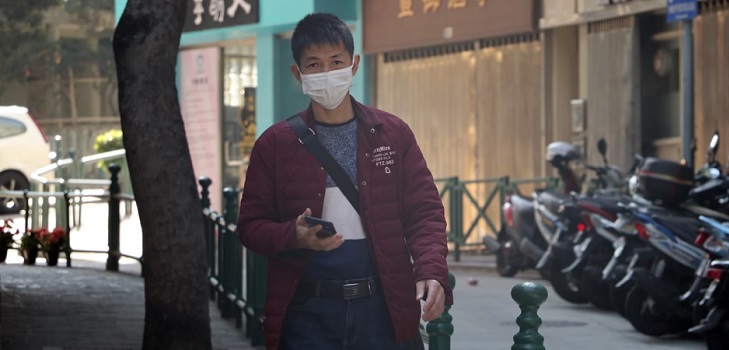‘Made in’ China? Coronavirus threatens the sourcing of fashion giants
Logistic restrictions have been implemented due to the epidemic put production and shipments in check from the largest clothing factory in the world. The country exports 157.8 billion dollars in clothing each year.

The coronavirus hits the heart of fashion sourcing. Due to the epidemic, factories have closed and limiting shipments from the largest clothing factory in the world, China, where all the giants in the sector are supplied, to greater or lesser extent. The health crisis threatens the spring-summer campaign and puts prices at risk for autumn-winter, the second (and greatest) season of the year.
Companies that concentrate their supplies in China will be most affected by this crisis. On the other hand, those that have flexible sourcing are already starting to adapt their orders. Portugal, to a lesser extent, Turkey and Morocco are the countries that most companies at looking into. Even so, the three countries combine can still not absorb of all of China’s production capacity.
The affected campaign will be both the spring-summer season which has already begun or is about to enter the stores, just as the autumn-winter collection also faces concerns. In the first case, companies begin to dear the delay or cancellation of orders while in the second case point to a rise in prices.
The production of the spring collection is dividend between before the Chinese New Year and after. Thus, it has been several weeks since factories should have been at full capacity, but due to the current health epidemic, the norm has not been followed.
In total last year, China exported 157.8 billion dollars of clothes and another 118.5 billion dollars in textile, being by far the largest exporter in both categories.
Among the most affected are large distribution groups specialized in commodities such as Primark. The Irish company is one of the most exposed to production disruption in China, where half of the factories with which the group works worldwide are located. Explicitly, the king of low cost operates with 1,033 supplies globally, of which 525 are in in the giant Asian continent.
H&M is one of the major distribution group with the greatest presence in the country in absolute terms. Among which fabric and finished garment suppliers, the company sums 952 factories in China, its principal global supplier. It is followed, although with great distance by Bangladesh, with 350 factories.
Inditex in contrast, has more diversified supply chain due to its own business model. China is the main supplier of the Spanish giant, with 449 factories, but the share over the total suppliers does not exceed 30%.
The affected campaign will be both the spring-summer season which has already begun or is about to enter the stores, just as the autumn-winter collection also faces concerns
The American group, Gap, is another of the companies that is most exposed to changes in its production in China. The US company works with about 900 factories in the world, of which about 200 are in China and the rest are distributed to a lesser extent among thirty countries.
Other Americans companies facing uncertainty with their suppliers in China include companies such as VF and Ralph Lauren, both also have a significant concentration of their supply in the Asian country. Timberland’s parent company operates with 147 suppliers in China. Ralph Lauren for its part, does not detail the number of factories with which it operates, but in its latest financial results, it emphasized that it continued to diversify its supply to avoid disruptions. The Japanese giant, Fast Retailing, will also be particularly affected as it has 130 factories in the neighboring country.
C&A also has its main supplier in China. The company distributes its productive force in 36 countries, but in China only, it works with 283 factories. Together with Bangladesh Turkey, India and Cambodia, the Asian giant accounts for 67.5% of its total suppliers.
In contrast, in the case of Tendam the share reaches 36%, well ahead of the second largest supplier of garments in the group, Bangladesh with 25%. As for Mango, it concentrates 60% of its production at a long distance, although in 2018 it made changes in its global supply map, reinforcing poles such as Turkey or Morocco. Although the company reduced its number of factories in China by 11.6% in the last year, the country continues to be its main productive hub with 327 factories followed by Turkey, with 224 continues production centers.
However, the most affected countries will be smaller companies (the vast majority in the fashion business) that, although they have less exposure to the country have less reaction capacity.


info@themds.com
Validation policy for comments:
MDS does not perform prior verification for the publication of comments. However, to prevent anonymous comments from affecting the rights of third parties without the ability to reply, all comments require a valid email address, which won’t be visible or shared.
Enter your name and email address to be able to comment on this news: once you click on the link you will find within your verification email, your comment will be published.